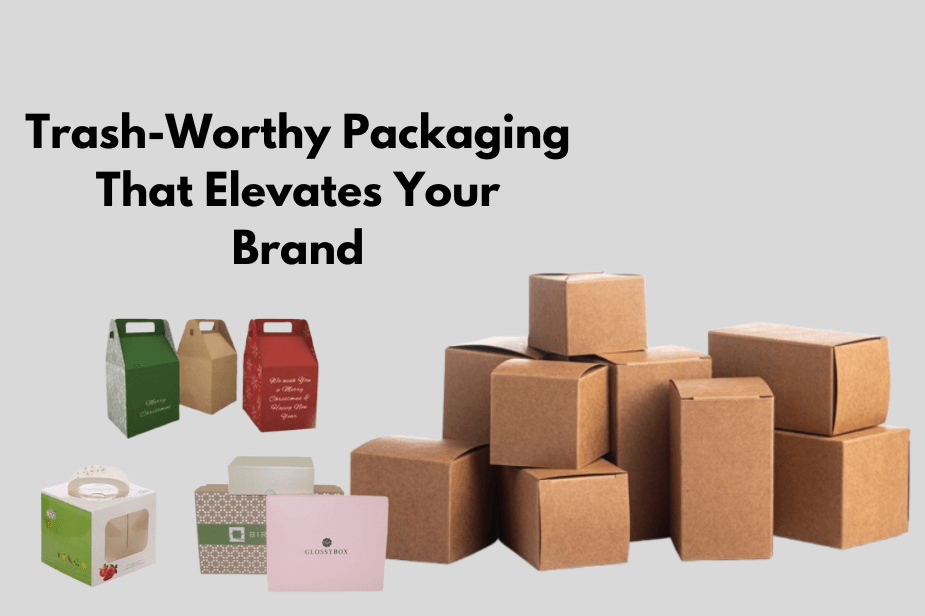Why We Designed Boxes That Look Better in the Trash Than on Shelves

In a world where packaging waste is becoming a global concern, companies are being challenged to think differently not just about what goes into the box, but what happens after it’s opened. At first, it might sound strange: why would anyone design boxes that look better in the trash than on retail shelves? But for many eco-conscious Alaskan businesses, this is not a compromise. It’s a bold branding move rooted in purpose, sustainability, and long-term consumer trust.
For local entrepreneurs using Custom Boxes Alaska, there’s a growing emphasis on making packaging look beautiful not just for the moment of sale, but for the full lifecycle including when it becomes waste. This approach aligns with customers who value environmental responsibility and are mindful of their consumption. Designing for the end, rather than just the beginning, allows Alaskan businesses to stand out in today’s conscious marketplace.
Beyond the First Impression
Traditional packaging design is obsessed with one goal standing out on the shelf. Bright colors, glossy finishes, and excessive embellishments are often used to capture attention. But these flashy designs can come at a high environmental cost, often involving non-recyclable laminates, plastic coatings, and inks that don’t break down naturally.
Modern packaging trends, however, are shifting toward minimalism, recyclability, and authenticity. Today’s eco-conscious consumers don’t just want beautiful boxes they want ethical ones. They appreciate packaging that aligns with their values, and they’re more likely to support businesses that reflect those values through every layer of their brand, including the packaging.
The Rise of Compostable and Recyclable Aesthetics
Designing packaging that looks “good in the trash” is not about poor visuals it’s about intelligent, ethical design. Boxes crafted from kraft paper, soy-based inks, water-based adhesives, and uncoated cardboard have a clean, natural appeal. These boxes not only decompose quickly but also look and feel eco-friendly in a customer’s hands.
Many manufacturers offering custom boxes USA are responding to this demand by introducing materials that retain aesthetic appeal while maintaining full biodegradability. These include:
- Unbleached kraft boxes with hand-stamped logos
- Recyclable or compostable mailers with minimalistic prints
- Plant-based inks in earthy tones
- Simple folding techniques that avoid glue or plastic tape
Such packaging doesn’t scream for attention it quietly communicates integrity.
Customer Perception of “Trashable” Beauty
It may sound counterintuitive, but customers increasingly appreciate packaging that’s modest and mindful. When a customer can throw a box into their compost bin or recycling bin without guilt, that box becomes a symbol of trust. It tells them the company has thought about more than profit it’s thought about people and planet.
This emotional connection with the packaging experience enhances brand loyalty. The positive association formed during the unboxing stays long after the product is used, especially when the disposal is as seamless and satisfying as the delivery.
Brands are starting to realize that minimal waste is not just good ethics it’s good marketing.
Sustainable Choices Alaskan Brands Are Making
Alaska’s unique connection to nature makes its businesses especially aware of sustainability. For many brands here, it’s not about greenwashing it’s about living authentically. From wild-harvested seaweed snacks to hand-poured candles and handmade crafts, Alaskan products are deeply rooted in natural processes, and their packaging reflects that.
Some examples of smart packaging strategies include:
- Eliminating plastic windows and coatings in favor of fully paper-based designs
- Using die-cut logos instead of ink to reduce print waste
- Encouraging reuse by including messages like “repurpose this box” or turning packaging into keepsake containers
- Collaborating with local artists to create unique, recyclable designs that tell a story without polluting
These decisions demonstrate that businesses don’t have to sacrifice identity to reduce environmental impact. In fact, sustainable packaging often enhances authenticity and visual coherence.
Designing for the Afterlife of a Box
When creating a packaging strategy that shines even in the trash, there are a few guiding principles to follow:
1. Use Honest Materials
Recycled cardboard, biodegradable adhesives, and inks that don’t leach chemicals are key. They offer a raw, natural look while serving the environment.
2. Minimize What’s Not Needed
Less is more. Skip the unnecessary inserts, layers, and glitz. Let the product speak, and use the box as a humble support.
3. Tell Your Sustainability Story
Use a small label, QR code, or side print to let your customer know why your box is different. This builds emotional connection.
4. Make Disposal Part of the Experience
Add a note that says, “This box is 100% recyclable or compostable. Toss it guilt-free!” You’ll be surprised how many customers appreciate that level of guidance.
These practices are now widespread among suppliers of custom boxes, especially those working with eco-forward clients who value design that respects the planet as much as the product.
Final Thoughts
Designing boxes that look better in the trash than on the shelf is not about giving up on aesthetics it’s about redefining what beauty means in a packaging context. It’s about choosing sustainability, authenticity, and responsibility over temporary flash. For Alaskan brands, this choice is more than a trend it’s a movement grounded in the values of community, respect for nature, and long-term thinking.
If you’re an Alaskan business owner looking to adopt smarter packaging practices, start by asking: what happens to my box after the unboxing? If the answer aligns with your customer’s values, you’re on the right track.To explore environmentally responsible packaging options that fit your brand’s mission, search for a Custom Box Near Me and collaborate with local experts who understand both sustainability and storytelling. Your next box could be your strongest brand message even in the bin.

